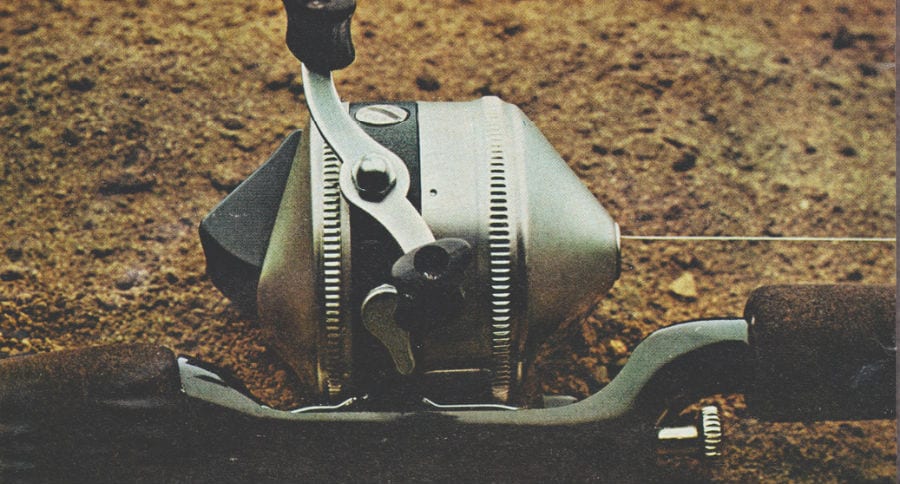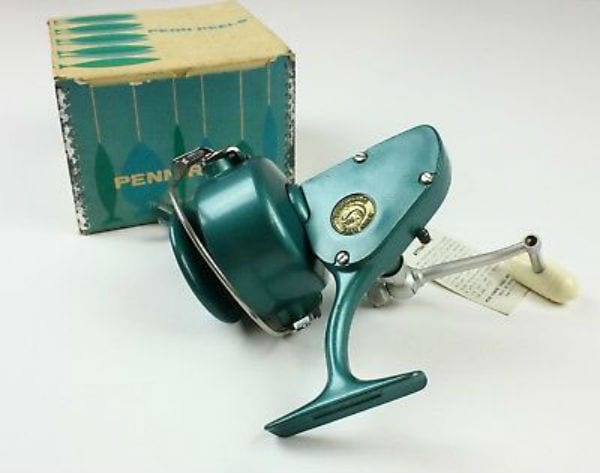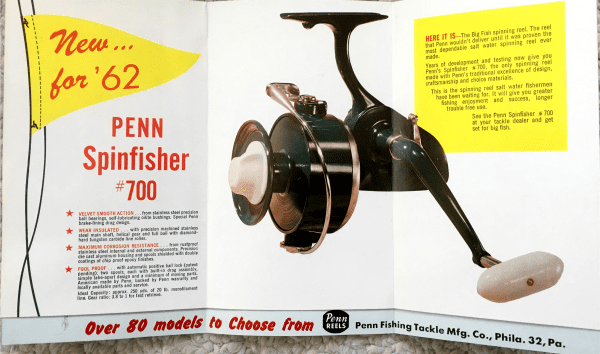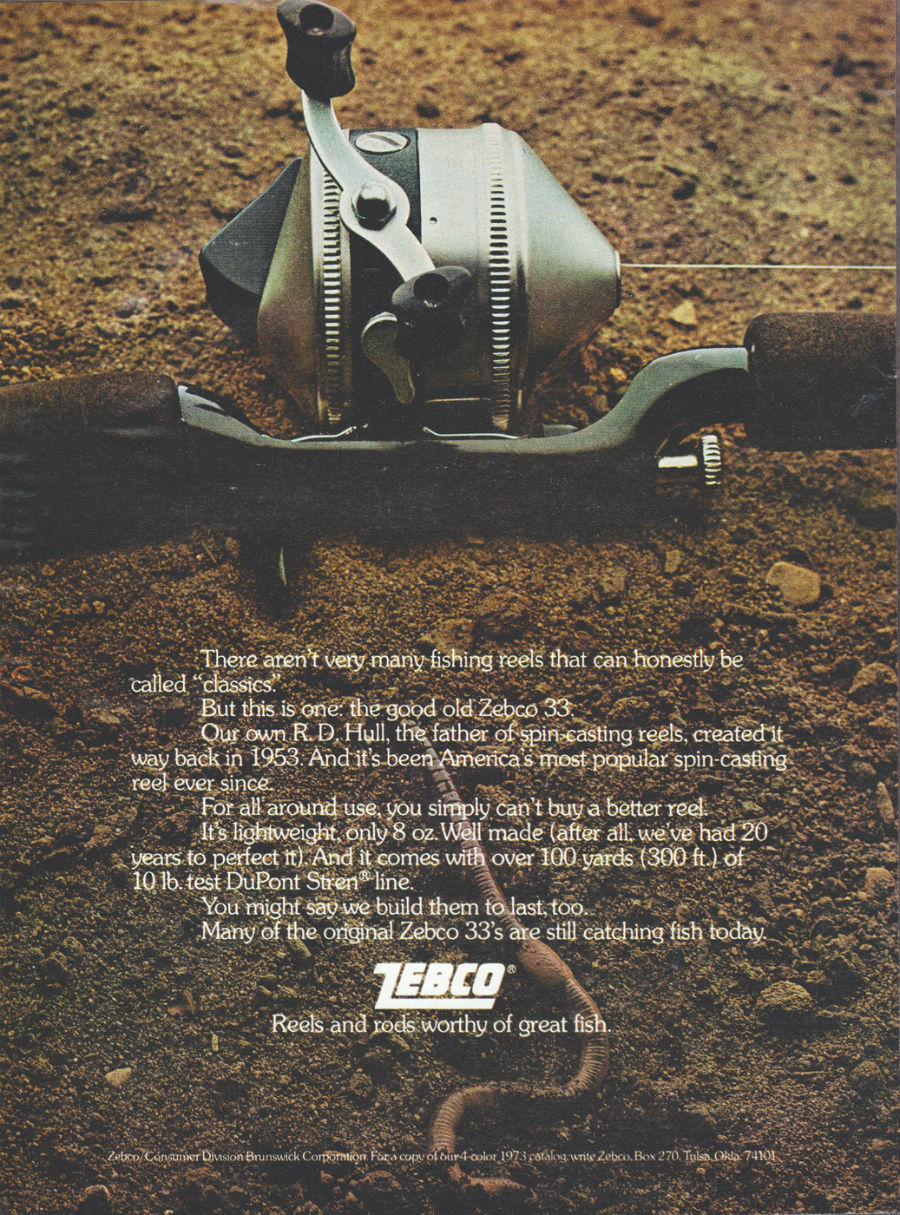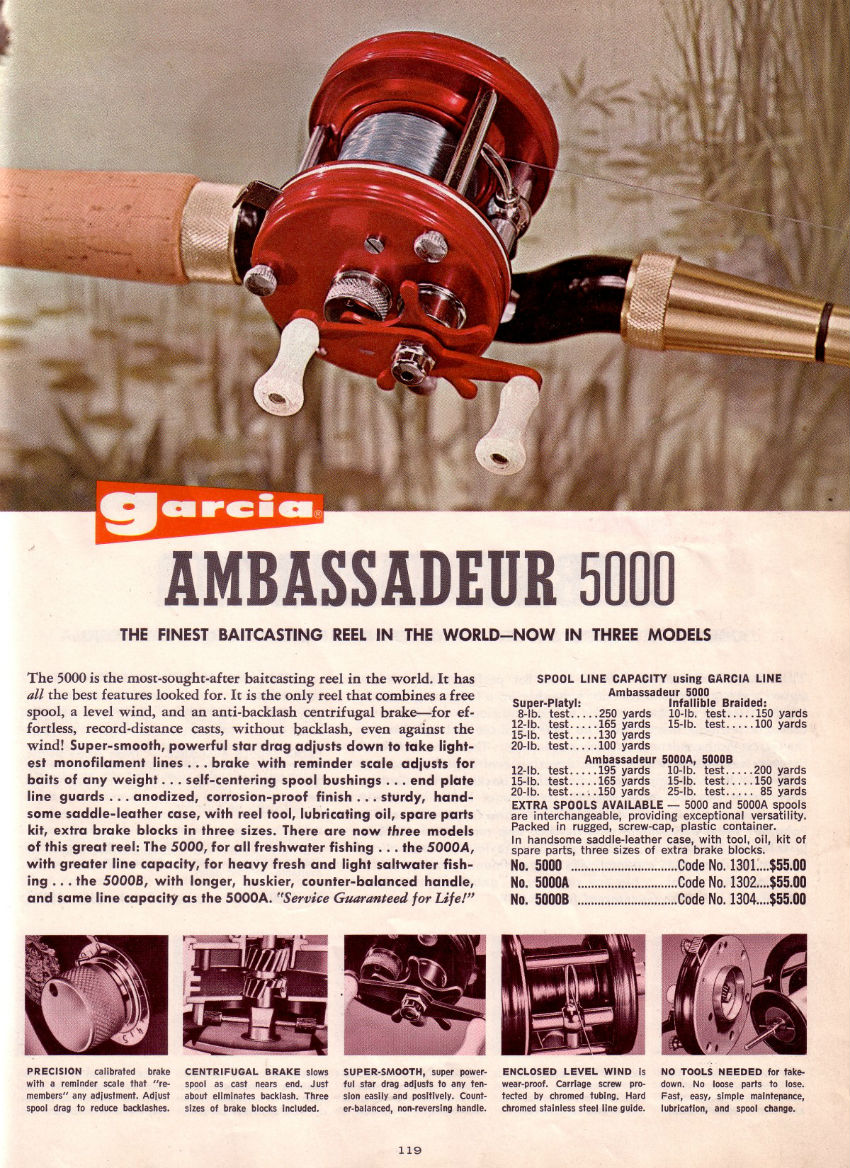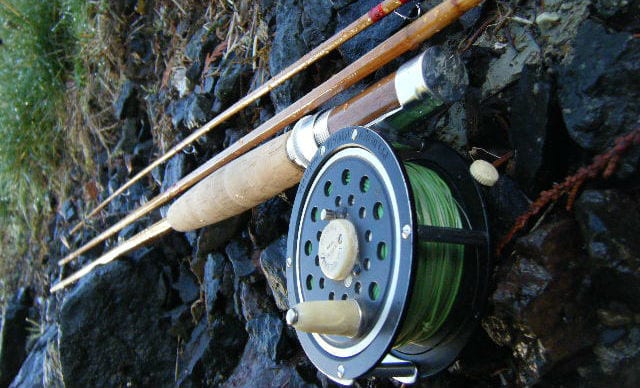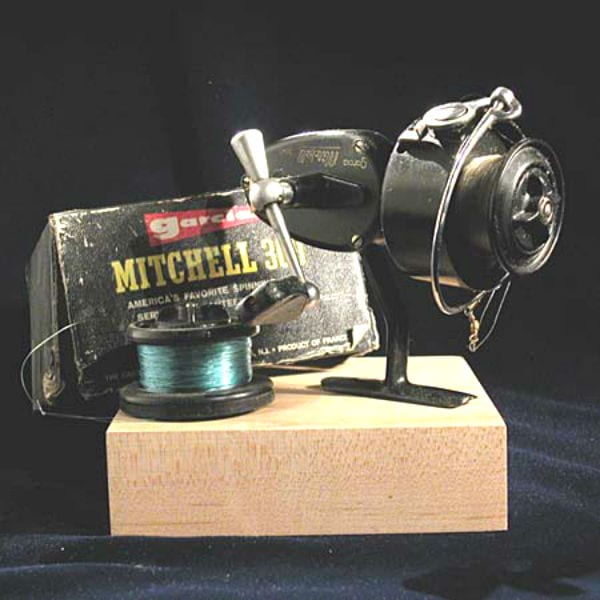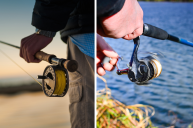Here are five historic classic fishing reels, some of which you may remember owning yourself if you're old enough.
The history of modern fishing is really the history of the fishing reel.
Let's take a look at some of the classic fishing reels of the last century.
Do you remember any of these?
Penn Spinfisher 700
Introduced in 1961 the Penn Spinfisher 700 was known as the "Finest Surf Spinning Reel." It quickly became a favorite reel for surf fishermen and saltwater anglers. This heavyweight reel was an eye-catcher with its distinctive mint green color.
The Spinfisher was a monster, a tank-like reel that could withstand the abuse of hardcore saltwater fishing. It had a line capacity of 250 yards of 20-pound monofilament. I've even seen various iterations of the model 700 used on Lake Michigan by chinook salmon anglers.
Penn is a time- and experience-honored name in saltwater fishing, with more than 1,400 IGFA world records set using Penn reels. Today, the company manufactures over 220 different reel models.
If you're lucky you might find the occasional Spinfisher 700 at a garage sale. Or you can purchase them online as there is something of a collector's market for them.
If you do get into collecting Penn Spinfisher reels, be sure to keep an eye out for a vintage Penn 700 silver or gold tie clasp. These little items will likely cost more than the reel itself.
Zebco 33
One of the best selling fishing reels of all time, the Zebco 33 spincasting reel has manufactured more than 40 million units since it was first introduced to the angling public in 1954.
It was invented by R.D. Hull when, according to legend, he witnessed a strand of twine fall to the floor from its spool. Designed to hold 10-pound test line, the model 33 is classified as a medium weight fishing reel.
Its closed-face, anti-backlash qualities made it a great choice for beginning anglers, although experienced fishermen loved it too. My grandfather relied on it to catch many different species of fish.
The Zebco 33 has remained in production since it was first introduced. The new model has been redesigned and updated to include improved line pick-up and bearings, a modernized drag system and gear train, and greater line capacity. An Auto Bait Alert also audibly notifies the fisherman when a fish tugs the line.
At a suggest retail price of between $18 and $35, the Zebco 33 is affordable enough for any angler looking to fish with a classic reel.
Abu Garcia Ambassadeur 5000
Abu Garcia unveiled their new Ambassadeur 5000 fishing reel at the 1954 New York World's Fair. Made in Sweden, the reel was a trailblazer, starting a revolution in the fishing world.
Its $45 retail price was hefty in the Eisenhower years, but the reel was so innovative and so beautifully crafted that the company sold hundreds of thousands of them. This was a reel that almost guaranteed an angler would catch more fish.
Its red color was distinctive, but it was the reel's innovations that set it apart from every other reel on the market. Featuring an anti-reverse mechanism, star drag, centrifugal brake, level wind and a push-button free spool design that disengaged the spool from the handle, the Ambassadeur laid the foundation for all subsequent baitcasting reels.
It could also easily handle monofilament fishing line. Mono had been around for a couple of decades, but braided Dacron line was still the most popular fishing line in use. It wasn't until 1959 and the introduction of Stren brand monofilament fishing line that mono really took off.
The Abu Ambassadeur seemed made for monofilament. It was a space-age reel that could comfortably handle a space-age fishing line.
Abu Garcia has manufactured four million Ambassadeur 5000s since they were first introduced. The iconic red color finally gave way to the Ambassadeur 5000C with a black finish and ball bearings in 1968.
There is a healthy collectible market for Ambassadeur 5000 reels, and they still perform well today. They are reliable and they look cool, two characteristics that endear them to anglers with a love for vintage fishing gear. I own four or five Ambassadeurs, including one that my Dad owned and fished with. I treasure them.
Here's a wonderful vintage demo commercial showing the Ambassadeur 5000 in action:
Pflueger Medalist
Fly fishing enthusiasts have their own classic fishing reels to remember. The Pflueger Medalist is the fly reel that fits that bill.
The Medalist has been around for nearly a century, having first appeared in the Pflueger catalog in 1931. The reel was made in Akron, Ohio until 1979 when production moved to China.
The Medalist was the first reel for many fly fishermen. It was simple in construction, aesthetically appealing, and affordable. This reel featured a click-pawl drag system in the early years of its production, but in 1938 an adjustable drag system was added.
The Medalist underwent a few changes over the years, while still maintaining its basic reliability. For example, the growing popularity of the spinning reel changed America's preference from right-hand reeling to left-hand reeling. Pflueger adapted to that change in the late 1950s by producing the Medalist as a left-hand winding fly fishing reel.
Pflueger has been a powerhouse fishing tackle company since its founding in 1880. The Medalist was just one classic, stand-out product that has stood the test of time. Many anglers cut their teeth on trout streams casting a fly rod with a Medalist. It still performs admirably wherever anglers choose to wet a fly line.
Mitchell 300
The Mitchell 300 spinning fishing reel is one of the most popular fishing reels ever. In 1970 12,000 Mitchell reels were being manufactured each day. By 1990 over 30 million Mitchell 300 reels had been sold worldwide.
The Mitchell reel was invented in the mid- to late-1930s by Maurice Jacquenim, a young engineer from the Avre Valley in France. While the reel had been invented and was being produced in France for several years, it wasn't until 1947 that the patent was applied for and the reel began achieving worldwide distribution and popularity.
This reel was named after Maurice Jacquimin's son Michel, but French law prohibited proper names from being used as product brand names. Michel thus became Mitchell. The Mitchell, as it was popularly known, could cast farther and more smoothly than any spinning reel that came before it.
It had an interchangeable left- or right-hand reeling handle, could retrieve line without tangling, and was so easy to use that even inexperienced anglers quickly mastered it.
So many Mitchells were sold that it's relatively easy to find ones in excellent condition and in good working order. Many even come in their original boxes. I own at least a half-dozen, including the same one I used as a kid. It's in good condition and still functions beautifully.
The legacy of the Mitchell 300 is one of introducing many new anglers to the sport. The reel's simplicity, easy and reliable operation, and inexpensive price made sure that at one time practically every angler in America owned a Mitchell. Nearly two thirds of all fishing reels sold today are spinning reels. That too is in large part thanks to the success of the Mitchell 300.
Since its initial release the reel has been updated many times. It's still being produced today, although it doesn't look the same as that old black workhorse used by kids and grownups across the country.
Like what you see here? Experience more articles and photographs about the great outdoors at the Facebook page, Stumpjack Outdoors.
NEXT: 8 THINGS YOU DIDN'T KNOW ABOUT THE FISHING BOBBER
WATCH
